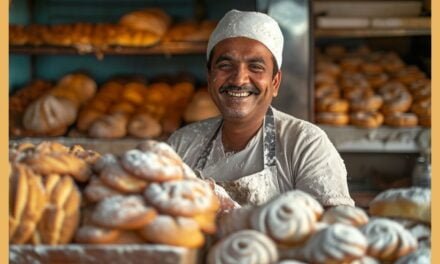Processed foods must be delivered to consumers quickly and cost-effectively to maintain quality, taste, and nutritional value. Timely distribution is crucial to prevent losses from expired or discounted products. Organised Retailing and E-Retailing companies are, therefore, relentlessly working and developing various models for improving services. Managing logistics effectively in the current context is, therefore, extremely important, opines Rajat Baisya*.
Processed food needs to be delivered to ultimate consumers at the shortest possible time and at least cost. This is important because most of the processed foods carry an expiry of about twelve months and the earlier it is consumed better it tastes and also retains the nutritional value. Discerning consumers carefully examine the date of manufacture and expiry date. And experience tells us that consumers are reluctant to buy any food items if it is over six months on the shelf. Indian market is dispersed and complex involving multiple handling for products to move from the production centre to retail outlets. To reach some market, it even takes three months for products to reach retailers following traditional channels.
For selling products like potato chips or even some types of snacks and savoury items half of the useful life is just lost which sometimes results in a big write-off of unsellable stock. Marketers also sell those at a discounted rate to avoid write off and losses. If you visit organised retail outlets, you can find that near expiry stock is being sold at a large discount. When it comes to fresh foods or perishables, the price reduces as the product ages by hours. The price in the morning when fresh arrives will be higher than the prices in the evening. Even after doing all these to maximise the profit, the wastages runs up to about ten percent.
Many models of food distribution have been tried by the marketers including direct selling to organised retailing and E-Retailing. Organised retailing bypasses the traditional channels of multiple handling and take products directly from the manufacturers and provide a good ambiance in large format retail stores where consumers can come, check and compare from the various options available and then decide what to buy. Whereas in E-retailing orders are received online and products are directly delivered to the customers sourcing the products also directly from the manufacturers.
Large numbers of food processors including small, medium, big and even multinational food processors are registered with Large E-retailers like Amazon and E-bay and consumers can buy those products directly online. In the traditional models, consumers will get little older products as channel length is long, in organised retail format, consumers will get relatively fresher stocks and will have options to choose from many alternatives available in the market and take a judicious buying decision. But in E-retailing buyers will get the product sitting at home without incurring any additional costs of travel and time and stock normally will be the most fresh and of recent production date.
The younger generation prefers this model and they even use their mobiles where they download the Apps to buy the stock from Amazon or E-bay even while they are on the move. Technology has provided them with the advantage to shop through e-commerce. This model is gradually getting acceptance and growing although not big enough a challenge for the traditional channel for food distribution and the treason being Indian market is too diverse and also dispersed.
Amazon has very recently opened a food retail store in Seattle, the USA where there is no employee working. Consumers are entering the store picking up the products whatever they like and the moment product is lifted from the shelf it gets billed and if the customers change their mind and put it back on the shelf it get deducted from the bill and that way customer can complete his shopping and walk out through exit gate where they will pay by touching on the payment touch screen through debit and credit cards and by the time customers finally exit the store the receipt of the payment made will also be delivered in their mobile.
A store that is running automatically without the involvement of any people. Technology has made people redundant. Although this store has been opened as a trial and on a demonstration basis but future organised food retail stores could be totally self- managed. The future of the food distribution appears to be going in a direction where consumers will be demanding freshly produced product to be delivered wherever the consumer wants to have it.
A lot of local delivery food stores where orders are being received either by phone or online and delivery is made whenever customers want to have come in all locality in their vicinity. For example, a customer can order the items of food that he wants and give instructions to deliver that at a designated place or his home at a particular time for cash against delivery. The whole industry is moving in a direction to make things more convenient and customer friendly. The challenge is how businesses can make customers happy and create a loyal customer pool. Everything, therefore, is now viewed as service.
Only producing a good quality product is not enough but it has to be delivered in a manner that customers find it acceptable and affordable. As the economy will grow the service sectors’ contribution to the economy will also grow. Around a product, so many services are developing and every offering has been seen as a way of giving better service to consumers.
There were times when over 75% of our GDP was contributed by agriculture but now agriculture contributes only 18% of our GDP and service sectors contribute about 58% and still growing. Businesses are, therefore, relentlessly working and developing various models for improving services either directly or in association and or partnering with others. All these can now be clubbed under what we call logistics. Managing logistics effectively in the current context is, therefore, extremely important.
As the traditional retailers are also very large in numbers cash & carry or wholesale models are also existing to service the retailers whom manufacturers and marketers don’t want to service directly. The wholesalers and cash & carry operators play a big role to ensure secondary distribution to reach interior and extended market. Many multinationals like Metro, Booker, Wal-Mart have Cash & Carry stores in wholesale format.
Metro is operating in India for almost twenty years now whereas Booker is there for about eight years and Wal-Mart is for six years. Wal-Mart started in a joint venture with Bharti Telecom but that JV did not last long and Wal-Mart is now running its own cash & carry stores which are large-format wholesale stores. None of these multinational players are reporting any profit from their operations but still keeping high hopes to make it happen.
MNCs with deep pockets can fight it out in a long-drawn battle. Their investment and perseverance will help the creation of more efficient and alternative food distribution channel which will benefit both food industry as well as consumers. While these large global players are still surviving but smaller domestic wholesale cash & carry operators could not continue and have closed down.
In the E-retailing multinationals like Amazon and E-bay are playing a similar role and struggling to create a viable model to service the consumers effectively at least cost. The success of these both cash & carry stores as well E-retailers is dependent on the effective and efficient management of logistics in the whole end to end value chain. In India logistics costs averages about 15% of the sales price because of our complexity and poor infrastructure whereas in developed economies, it is about 8%.
There is a significant opportunity to improve logistics costs in the business which will change the performance of food distributors in the country. Fortunately, a lot of work now is being done by the operators to improve in over-all management of warehousing, inventory, transportation and distribution and things are likely to improve. Food distribution in India will go through a metamorphosis in the coming years.
*The author is the chairman of Strategic Consulting Group and served as Professor and Head of the Department of Management Studies, IIT Delhi. | Photo courtesy: Udit Kulshrestha | Bloomberg
















